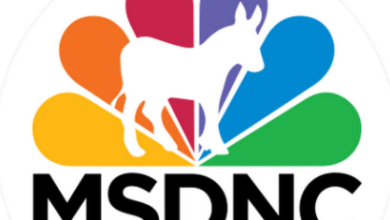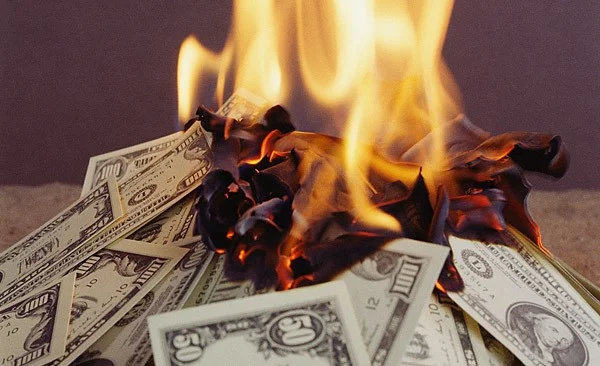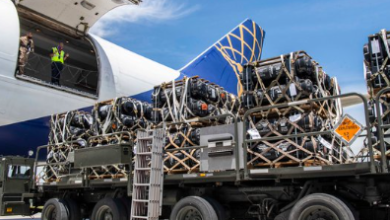Scenes From The Courtroom During Trump’s Third Arraignment
Washington, D.C. — Former President Donald Trump was very talkative with his attorneys during an hour-long arraignment on Thursday following his indictment on charges brought by Special Counsel Jack Smith, the Daily Caller News Foundation witnessed from the courtroom.
Trump traveled to the Elijah Barrett Prettyman United States Court House in Washington, D.C. on Thursday to be arraigned on four charges before the U.S. District Court for the District of Columbia, relating to his attempts to overturn the results of the 2020 presidential election and events that took place at the U.S. Capitol on Jan. 6, 2021. Upon his arrival at the courtroom for a brief appearance, Trump was engaged in conversations with his lawyers about the proceeding and often smirked at both his lawyers and the gallery.
Trump entered the courtroom flanked by his attorneys John Lauro, the lead counsel, and Todd Blanche, who sat to Trump’s right. Prior to the arrival of the presiding magistrate judge, Trump — who was dressed in his well-known navy blue suit and glazed red tie, with a U.S flag lapel pin — leaned in to speak with both of them and review several documents they carried.
🚨BREAKING🚨
Trump makes a statement after being arraigned for the 3rd time
TRUMP: "If you can't beat 'em, you persecute them or you prosecute them." pic.twitter.com/yCKOhtb5iJ
— Daily Caller (@DailyCaller) August 3, 2023
Jack Smith, the special counsel who has led the investigations into Trump, did not appear on behalf of the United States government in the case, which was instead represented by Thomas Windom, an assistant U.S. attorney detailed to the Special Counsel’s office who has prosecuted defendants charged for entering the Capitol on Jan. 6, 2021. Smith, however, was present for the arraignment and was seated in the front row of the galleries.
Trump did not appear to look at Smith, and Smith only occasionally looked at Trump. Smith’s parents were also present in the courtroom.
The presiding magistrate judge, Moxila Upadhyaya, was delayed in her arrival to the courtroom by 15 minutes. Trump spent the moments before her arrival reading a paper that Lauro had placed in front of him.
Upadhyaya’s entry to the courtroom began the official proceedings, with Trump being sworn in by the clerk. He said, “I do,” when asked whether he would tell the truth, the whole truth and nothing but the truth.
Upadhyaya then asked Trump to state his name for the record. “Donald J. Trump. John,” he responded, and answered that his age was “Seven-seven, 77.” She also asked him if he had used any inebriating substance that would prevent him from understanding the proceedings, to which he replied “No, I have not.”
Upadhyaya then proceeded to guide Trump on how the arraignment would proceed and stated the four counts on which he had been charged, which included three counts of criminal conspiracy and one count of obstruction of an official proceeding, referring to the certification of Electoral College votes in Congress on Jan. 6, 2021. She also laid out the penalties, with the maximum, for obstruction, being 20 years in prison and a fine of $250,000.
Trump was then advised of his rights to remain silent and to counsel, as well as offered a government attorney by Upadhyaya if he wished. She then ordered the Special Counsel prosecutors to turn over all “exculpatory evidence.”
Trump was then formally “arraigned” on the charges. He rose to the stand and was asked for his plea.
“Not guilty,” Trump said. Trump waived the reading of the full indictment.
At that point, Upadhyaya recognized Windom to speak on behalf of the Special Counsel’s office regarding steps for Trump’s release. Windom said that the government was “not seeking Trump’s detention,” but read into the record several agreed-upon conditions for Trump’s release — among others, that Trump not commit any federal, state or local crime and that he not communicate with any witnesses in the case, which had been negotiated in advance, Lauro later said.
Upadhyaya warned Trump to abide by the conditions, stating that a warrant would be issued for his arrest if he didn’t do so, and that he may face a longer prison sentence as well as contempt charges for disobeying the court. “The most important condition is that you do not commit another crime,” Upadhyaya emphasized.
Trump responded by saying “Yes.” He then signed a copy of the conditions for his release.
Upadhyaya, thereafter, set the next hearing date in the case as August 28, 2023, which would be before U.S. District Judge Tanya Chutkan, the judge designated to preside over the case and its likely trial. She overruled a request from the Special Counsel prosecutors to have it set for August 21, the earliest of three options that were presented.
Trump was advised that he did not need to be present for the second hearing, a waiver having been granted to him for his particular circumstances and scheduling.

Anti-Trump protesters gather outside the E. Barrett Prettyman U.S. Court House to demonstrate against former President Donald Trump, who was arraigned there on Thursday, August 3rd, 2023. Arjun Singh.
Thereafter, Upadhyaya ordered the parties to file briefs regarding a potential trial date and the parameters of the case, with the Special Counsel’s office being required to file within seven days of the arraignment. At this point, Lauro rose to plead that the Special Counsel inform Trump’s legal team of the magnitude of evidence.
“There will be massive discovery,” Lauro was heard as saying, referring to publicly available data, interviews, reports and other media regarding the incidents relevant to the case. The Special Counsel stated that it would do so once a protective order was issued in the case regarding the evidence.
Additionally, Windom rose to state that there should be an expectation of “normal order, including a speedy trial.” Trump’s legal team has previously attempted to delay trial dates that would interfere with his campaign for the presidency in the 2024 election, and Lauro rose to object.
“They’ve had three and a half years to investigate,” he said while claiming that the government’s speedy trial request was “absurd.” He made an oral motion for an exception to the request, and Upadhyaya directed him to file the motion in written form within five days with Judge Chutkan.
Upadhyaya, however, appeared disinclined toward the government’s request. “There will be a fair trial,” she said, in response to Windom’s speedy trial request.
Upadhyaya then adjourned the arraignment. Trump rose and left the courtroom after a moment of speaking with his lawyers.
Around the courthouse, protesters had gathered along Constitution Avenue and were split between pro-Trump and anti-Trump groups by police. Trump’s motorcade was seen leaving the courthouse and did not pass the protesters.
Content created by The Daily Caller News Foundation is available without charge to any eligible news publisher that can provide a large audience. For licensing opportunities of our original content, please contact licensing@dailycallernewsfoundation.org




